This was published 9 years ago
Rome, Italy: a literary tour of the Romantic poets
A tour of literary Rome revisits the lives of English Romantic poets John Keats and Percy Bysshe Shelley, who are both buried in the city's Non-Catholic Cemetery.
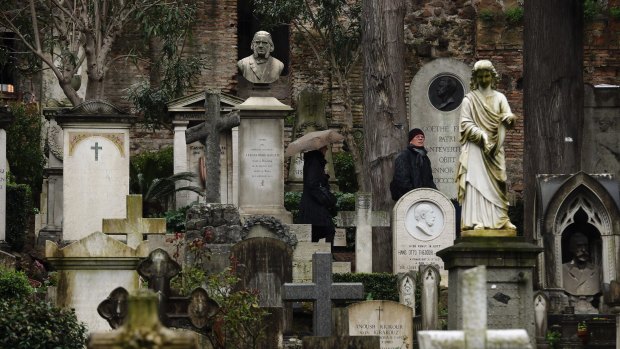
Resting place: Rome's Non-Catholic Cemetery contains one of the highest densities of famous and important graves anywhere in the world.
Birds tweet, gloriously purple flag irises stretch into full bloom and peace envelops Rome's most beautifully primped oasis. Amidst the bliss is tragedy, though. From the bench where we take in the weak afternoon sunshine, we can take in the gravestone.
It reads: "This grave contains all that was mortal of a young English poet who, on his death bed in the bitterness of his heart at the malicious power of his enemies, desired these words to be engraven on his tomb stone. Here lies one whose name was writ in water."
The mystery poet is far better known now than he was back in February 1821 - when he died at the age of just 25.
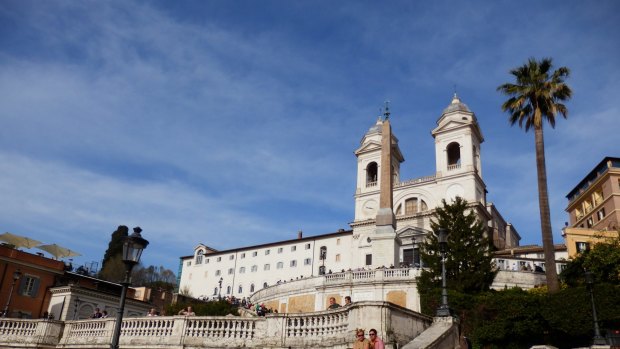
Popular destination: The Spanish Steps.Credit: David Whitley
John Keats' ill-advised journey to Italy started on a cold, wet night in London. A notoriously sickly man, he decided to save money by hanging on to the outside of a carriage rather than sitting inside it. When he got home, he had more than the sniffles and began coughing up blood. "That blood is my death warrant," he said. "I must die."
His friends and family had other ideas. Wanting to save a man who was almost universally loved for his kindly good nature, they decided to send him south. The Italian climate, they thought, would do him wonders.
What he got was more of the same wintry drizzle, but with disastrous humidity and a long, wearying journey thrown in. The man who would soon become regarded as one of the great poets wrote nothing while in Rome – he didn't live long enough.
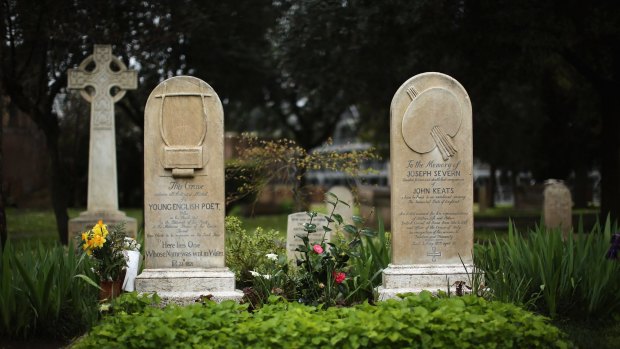
Together in death: The gravestones of John Keats and his friend Joseph Severn.
For Hilary Bockham, the Context Travel lecturer who created the Timeless Inspirations tour, using the Romantic poets was a way of showing off the Non-Catholic Cemetery. "I've always adored this place," she says before embarking on a swoony sigh at the burgeoning wisteria. "And Oscar Wilde agreed – he lay here and called it the holiest place in Rome."
Built against the ancient city walls near the Pyramid monument, the land for the cemetery was set aside as a compromise. "Until the early 1700s, non-Catholics, prostitutes, actors and other undesirables were slung in a hole in the ground outside the city walls," Bockham says. "But when King James of Scotland arrived with his mostly protestant Jacobite followers, this was seen as inappropriate. So the Pope allotted this piece of land, which quickly started filling up with Grand Tourists – who came up to complete their education, but got involved in carriage accidents or contracted malaria."
Further round in the cemetery, past gorgeous tombstones of weeping angels and seated schoolboys, is the grave of Keats' contemporary, Percy Bysshe Shelley. He was living in Pisa with Lord Byron and assorted hangers-on at the time of Keats' death. It inspired one of his greatest works, the epic poem Adonais.
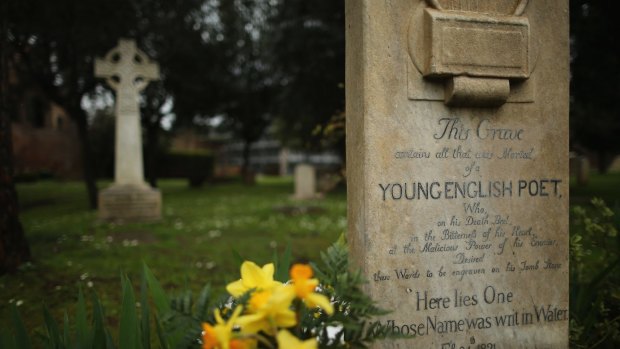
Mourned: John Keat's gravestone.
Shelley died the next year after a boat trip along the Italian coast ended in a stormy demise. His body washed up on a beach 11 days after the shipwreck. He was identified only by the volume of Keats poetry he was holding. Fittingly, there's a quote from The Tempest on Shelley's gravestone.
Whatever you think of their poetry, there's no denying that the lives of the Romantic poets were utterly riveting. As we cross the city in a taxi, Bockham tells of Shelley being thrown out of Oxford University for writing a treatise on the importance of being an atheist and Byron escaping Britain after being accused of homosexuality, incest and sodomy.
There are more stories to be uncovered in a small house on the Spanish Steps. This was where Keats lived while he was in Rome, boarding with a local mother and daughter. Now called Keats-Shelley House and operating as a museum, the rooms are lined with thick wooden bookshelves. But it is the letters and documents in the glass cabinets that make the most interesting reading.
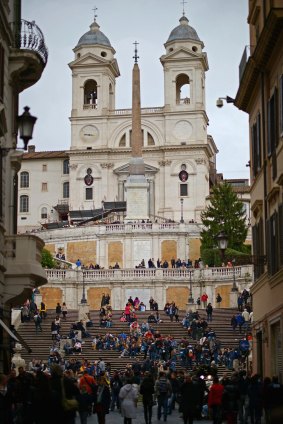
Tourist draw card: The Spanish Steps where the Keats-Shelley House, in which Keats died, is located.
One is simply a receipt for a piano, ordered by a friend so that Keats could hear music before he died. There are also letters from his estranged fiancee, Fanny Brawne. He never opened them as the sight of her handwriting broke his heart.
Another letter is from his companion, Joseph Severn, telling of Keats' death. "I lifted him up in my arms and the phlegm seemed boiling in his throat," it reads. "This increased until at night when he gradually sunk into death – so quiet that I still thought he slept."
There's also a letter from Severn telling of his fury at the "monstrous business" conducted by the city authorities when they burned all the furniture in the house after finding out Keats had died of tuberculosis.
Shelley never lived in the house, but numerous artefacts relating to him can be found inside. A painting shows his funeral pyre burning on the beach where his body was found, an urn contains part of his jawbone and a cabinet protects a lock of his hair. "Ironically for someone who first came to prominence writing about atheism," Bockham says. "It has become a reliquary."
The tour finishes on the house's small balcony overlooking the Spanish Steps. There can be fewer more appealing spots in Rome. Bockham pulls out a small bottle of Prosecco and pours a glass before reaching back into her bag to pull out some printed passages from Keats and Shelley. The latter's optimism clashes with the former's understanding that happiness and sadness are linked. Below, artists paint, locals stop to chat and visiting couples put their arms around each other for photos. It's fittingly romantic.
The writer was a guest of Context Travel and JK Place Roma.
TRIP NOTES
MORE INFORMATION
GETTING THERE
Etihad offers flights from Melbourne and Sydney to Rome Fiumicino airport, via Abu Dhabi. See etihad.com.
STAYING THERE
The JK Place Roma adds a much needed contemporary luxury escape. Doubles from $800. See jkroma.com.
TOURING THERE
Context Travel's Timeless Inspiration tour costs $125. See Contexttravel.com.
Sign up for the Traveller Deals newsletter
Get exclusive travel deals delivered straight to your inbox. Sign up now.